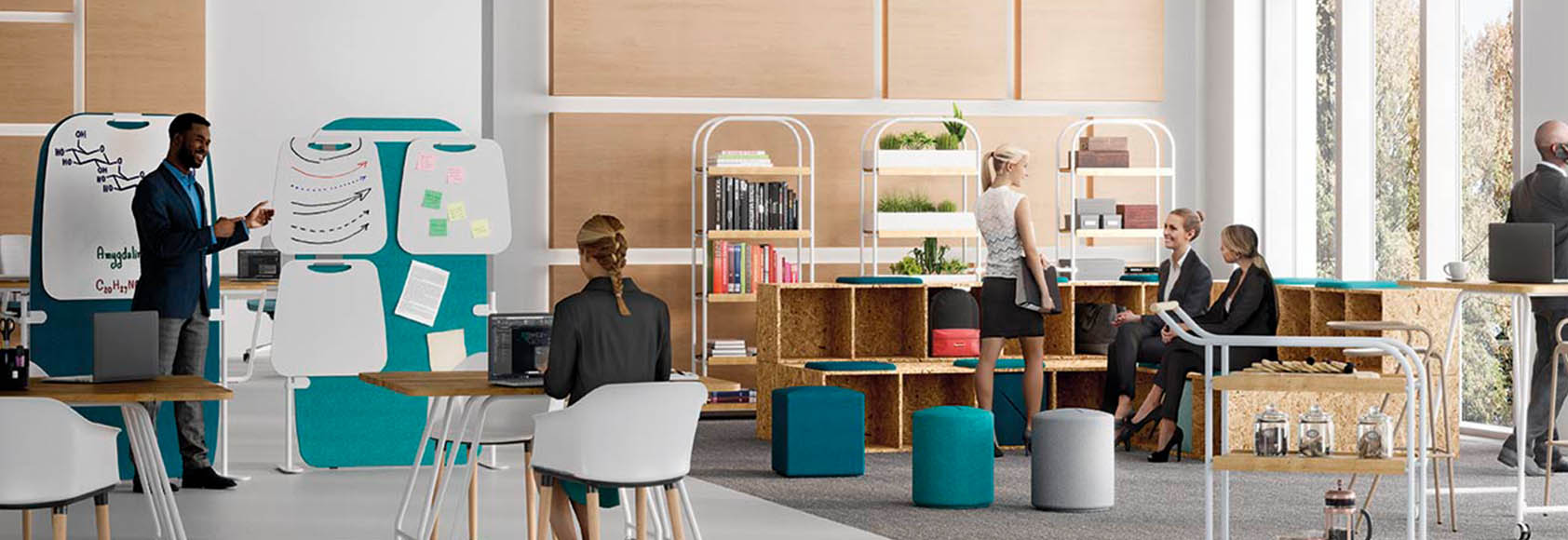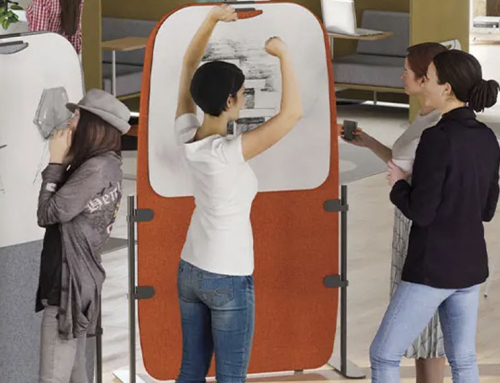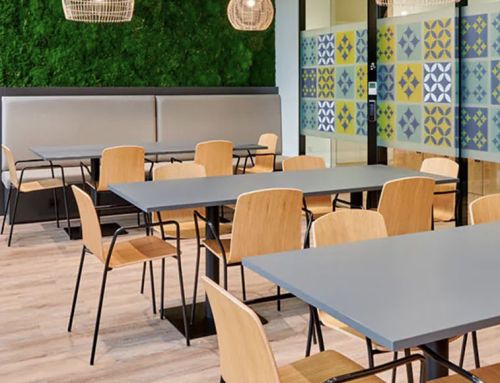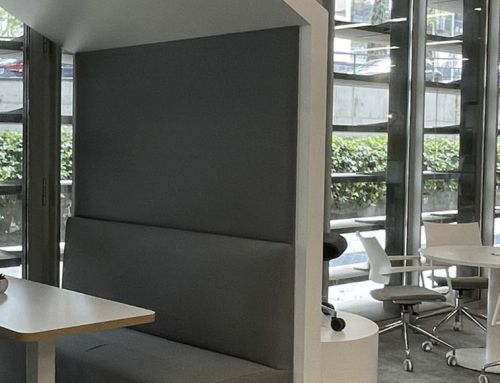Open plan vs. closed offices. The design war continues. After years of debate, the two concepts have both defenders and detractors.
A few years ago, the open plan layout model was implemented, according to the open plan design. The model of closed offices that had prevailed until then was obsolete. In this way, hierarchies between bosses and employees were eliminated to promote teamwork in open spaces in view of the rest.
But when open space seemed like it was here to stay, it seems that many companies and professionals in corporate architecture are swimming in the opposite direction.
In fact, more than two thirds of US workers are unhappy with the noise levels at work and 53% say that other people get upset when they try to concentrate, according to a study carried out by Gensler.
Open offices, much more than tearing down walls
The open office concept is not just about breaking down the walls. It means a different culture and way of working; more collaborative, horizontal, transparent and without hierarchies. Actually, it talks about shared spaces that do not have an assigned workstation for each employee. With the aim of promoting interaction between people.
The design of open offices requires an open mind and a flexible culture to give workers, for example, the possibility that certain jobs, which possibly require greater concentration, are carried out outside the office.
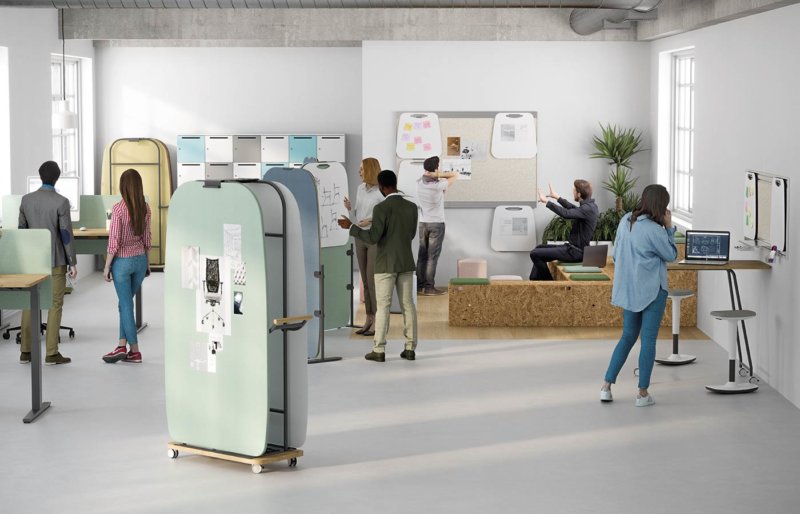
Forthink – Ofita
Open offices vs closed offices
Open offices are undoubtedly a useful model: they allow space savings, greater communication, more exchange of ideas and favor shared knowledge. However, many produce rejection by employees, up to the point of missing their old closed offices.
Open offices may be the best showcase of a modern company and the best design to promote collaborative work, but they are not the best ones to promote concentration and, therefore, productivity. The constant phone calls, conversations between colleagues, etc. All this causes constant distractions that prevent creating an atmosphere of concentration where the worker can give the best of himself.
The constant noise is one of the inevitable discomforts of open designs, and increasingly more people are discouraged with office distractions designed with open plan layouts.
Collaboration is undoubtedly essential in today’s ways of working, but too much contact can also dramatically reduce people’s productivity and well-being.
One solution to this problem is to design workspaces that strike a balance between the need for interaction between colleagues and moments of silence to concentrate, or to simply make a personal phone call.
To this end, more and more companies have begun to include soundproof booths and more private areas in open offices, as in this image of Ofita’s Forthink system.
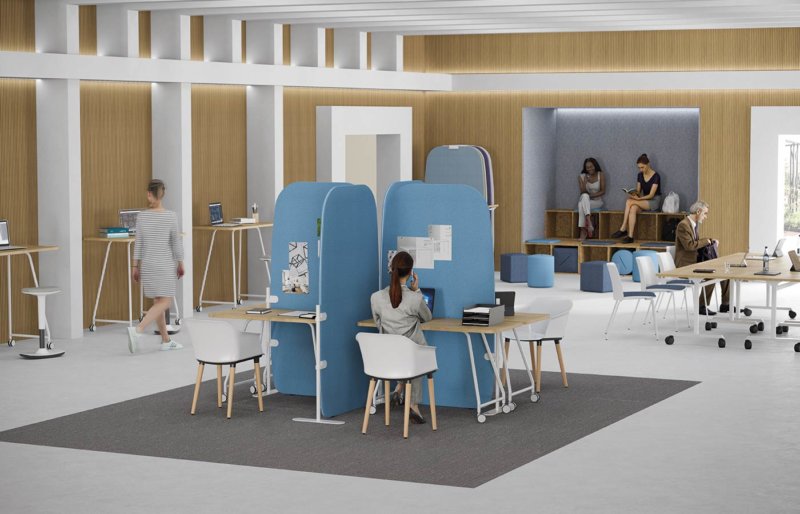
Forthink – Ofita
Soundproof booths for private moments
The soundproof booths for concentrating provide the necessary privacy for those workers who need to be isolated from phones and noise.
Some of these private cabins include comfortable sofas and can be shared by several people for teamwork. Now, the pandemic has made many companies consider the security of this type of closed space.
From Ofita we propose an innovative and very safe solution: the new Vetrospace cabins , both for individual use and for teamwork. These acoustic booths have viricidal and antibacterial properties, as we mentioned in this other article.
What no one doubts is that when people are in a shared and open environment, the space will not work if companies do not provide their employees privacy for certain jobs or times. For this reason, the open space works when it coexists with a wide typology of different spaces for different uses and needs.
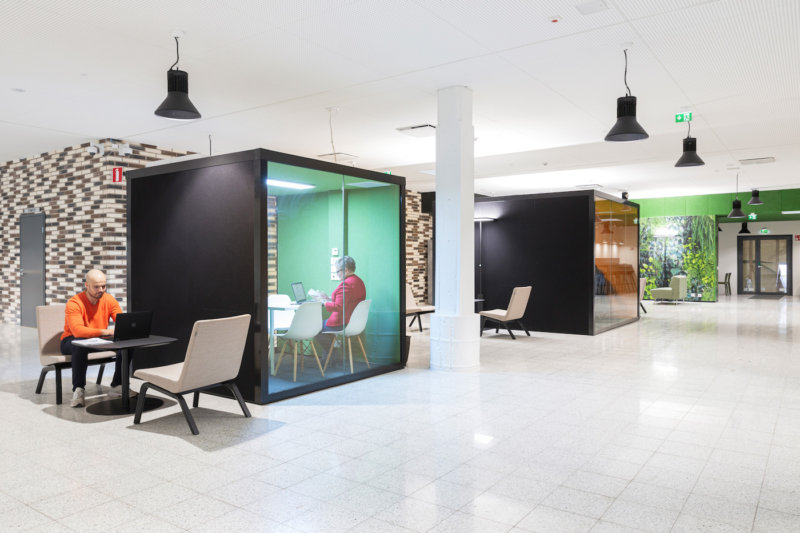
Two types of open offices
Therefore, we can speak of two types of open offices: the total open plan model, that is, a totally open and shared design, and mixed offices, with more followers every day due to their versatility. These offices have open areas for the team and spaces behind closed doors for very specific moments or jobs. For example: offices for meetings or call areas.
